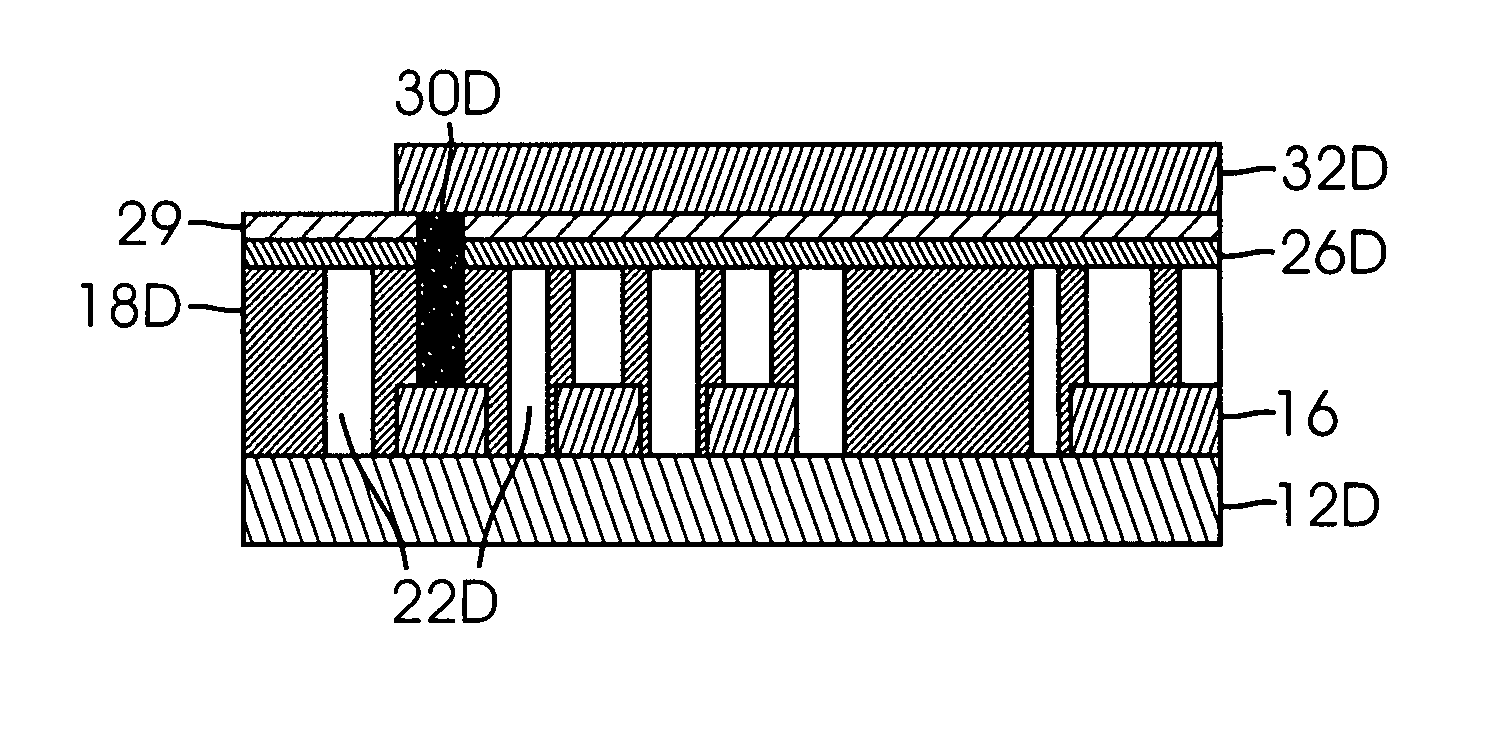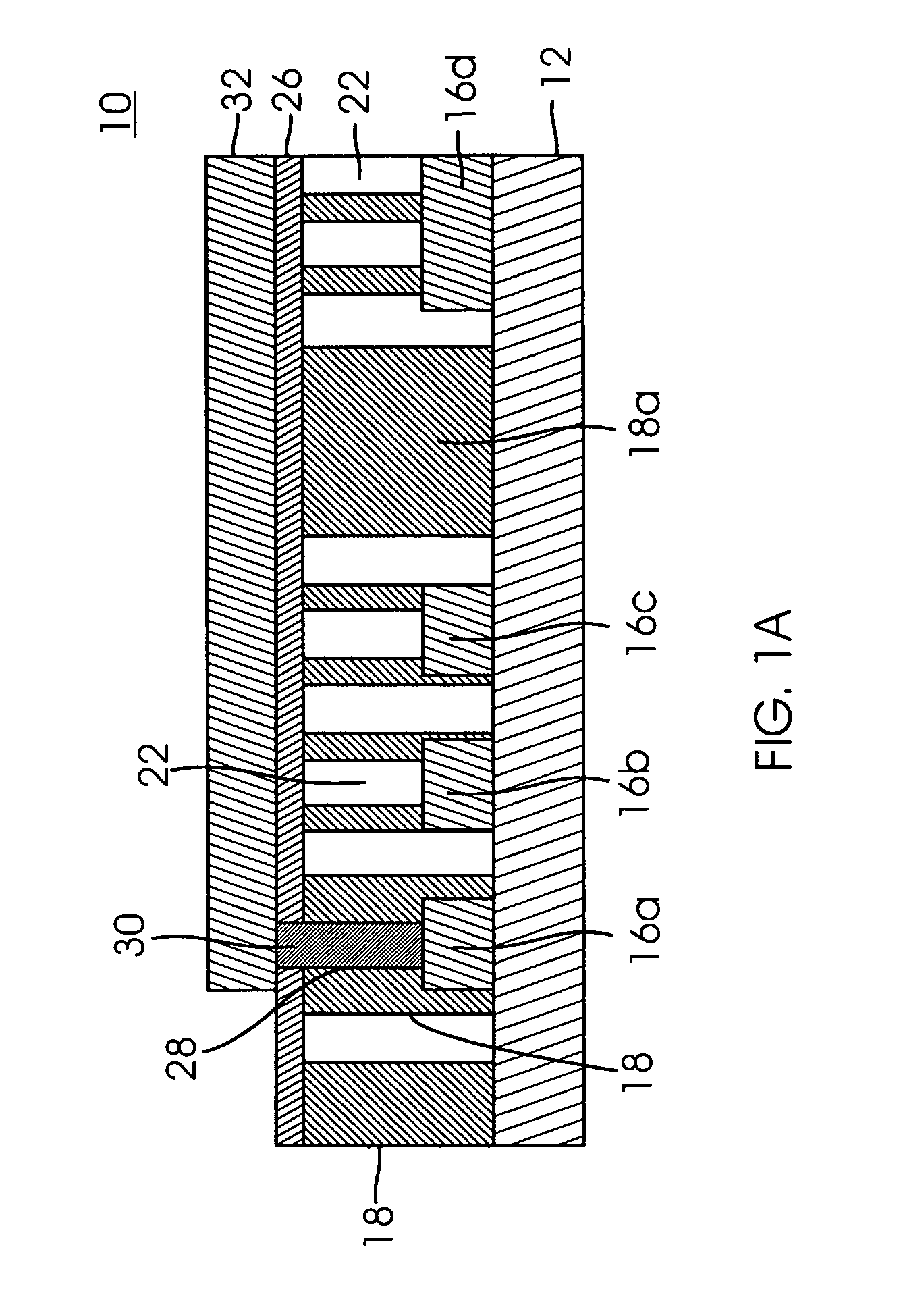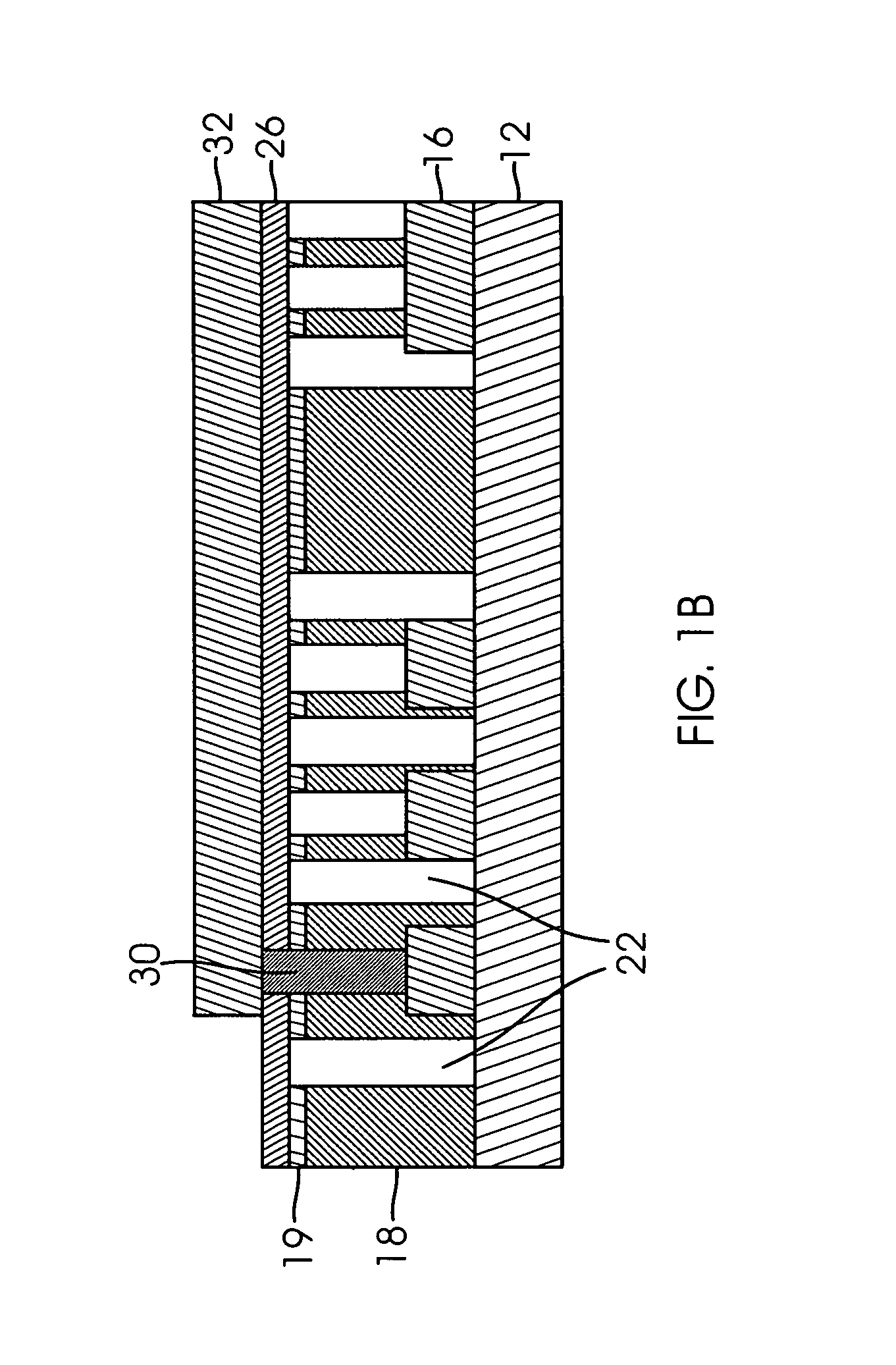Method of fabricating an interconnect structure employing air gaps between metal lines and between metal layers
a technology of air gaps and interconnect structures, applied in the field of new interconnect structures and methods for forming integrated circuits, can solve the problems of undesirable rc delay, rc delay, signal propagation delay, etc., and achieve the effect of reducing parasitic capacitan
- Summary
- Abstract
- Description
- Claims
- Application Information
AI Technical Summary
Benefits of technology
Problems solved by technology
Method used
Image
Examples
first embodiment
[0034]FIG. 1A is a vertical cross sectional view of a novel interconnect structure 10 formed on a layer 12 according to the present invention. Layer 12 can be a semiconductor substrate formed from a semiconductor material, such as silicon or gallium arsenide (GaAs), or a dielectric layer formed from an insulative material. When layer 12 is a substrate, layer 12 can include transistors, diodes, and other semiconductor devices that are well known in the art. When layer 12 is a dielectric layer, layer 12 can contain vias or contacts (not shown) for providing an electrical connection between interconnect lines 16 and lower structures (not shown) of the integrated circuits.
[0035]A first conductive layer 16 is deposited over layer 12 and patterned to form interconnect lines 16a–16d. A patterned conductive layer is referred to also as an interconnect layer. After the first conductive layer 16 is patterned, a plurality of interconnect lines 16, separated by spaces 17 (see FIG. 2), remain. T...
fourth embodiment
[0064]FIGS. 19–33 are cross-sectional views of an interconnect structure according to the present invention at selected stages of fabrication. This embodiment utilizes another dielectric layer (i.e., a second dielectric layer 62C) in addition to the first dielectric layer 18C. This embodiment provides an interconnect that can have two different dielectric materials. For example, one dielectric layer can be made from SiO2, and the second dielectric layer can be made from a low-k material.
second embodiment
[0065]This embodiment is based on FIG. 17 since only intra-line capacitance is addressed. However, the steps in FIGS. 19–25 correspond generally to those in FIGS. 2, 3A–3C, 4–6, respectively, and description related thereto will not be repeated herein. The main difference in this embodiment is that a second dielectric layer 62C is deposited over sealing layer 26C in FIG. 26, and the processing thereafter (such as via hole formation) affects second dielectric layer 62C. Moreover, the steps in FIGS. 27 and 28 correspond generally to those in FIGS. 7 and 8, respectively, except that photoresist is applied to second dielectric layer 62C instead of sealing layer 26, and the via hole is etched in second dielectric layer 62C in addition to sealing layer 26C and first dielectric layer 18C.
[0066]FIG. 31B illustrates the interconnect structure of the fourth embodiment having hard masks 19C and 19D. If first dielectric layer 18C and second dielectric layer 62C (described below) are made with a...
PUM
 Login to View More
Login to View More Abstract
Description
Claims
Application Information
 Login to View More
Login to View More - R&D
- Intellectual Property
- Life Sciences
- Materials
- Tech Scout
- Unparalleled Data Quality
- Higher Quality Content
- 60% Fewer Hallucinations
Browse by: Latest US Patents, China's latest patents, Technical Efficacy Thesaurus, Application Domain, Technology Topic, Popular Technical Reports.
© 2025 PatSnap. All rights reserved.Legal|Privacy policy|Modern Slavery Act Transparency Statement|Sitemap|About US| Contact US: help@patsnap.com



